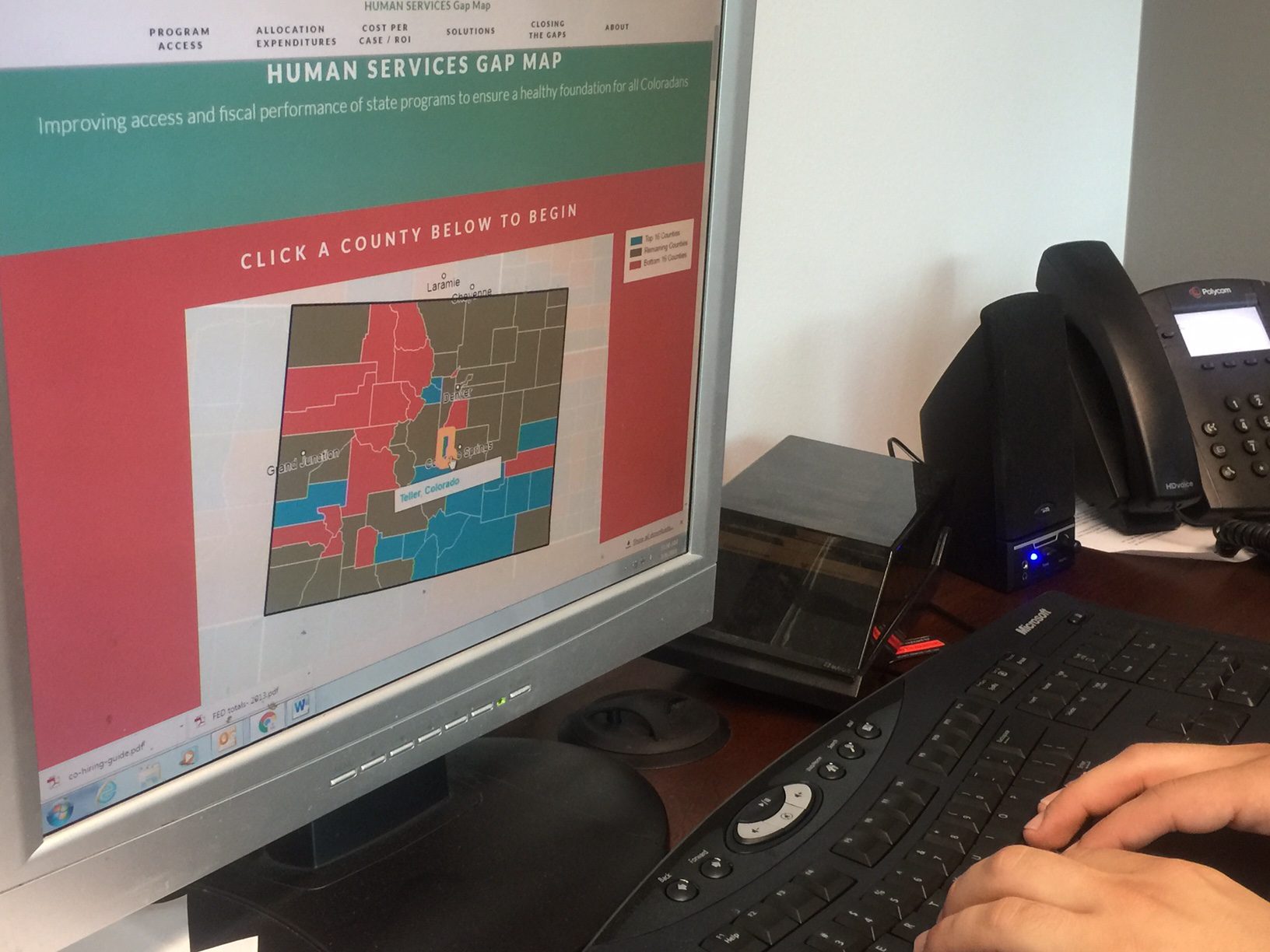A summary of the list of recommendations on the implementation of the OBBBA in Colorado regarding public benefits systems and work requirements.
Recent articles
CCLP testifies in support of Colorado’s AI Sunshine Act
Charles Brennan provided testimony in support of Senate Bill 25B-004, Increase Transparency for Algorithmic Systems, during the 2025 Special Session. CCLP is in support of SB25B-004.
Coloradans launch 2026 ballot push for graduated state income tax
New ballot measure proposals would cut taxes for 98 percent of Coloradans, raise revenue to address budget crisis.
CCLP statement on the executive order and Colorado’s endless budget catastrophe
Coloradans deserve better than the artificial budget crisis that led to today's crippling cuts by Governor Jared Polis.
Mapping Colorado’s human-services landscape

Human-service programs ensure that Colorado communities have the building blocks for a prosperous future, such as food, health care, child care and financial assistance. But not all Coloradans who qualify for these essential programs get the assistance they need.
Funded by various combinations of state revenue and federal dollars, Supplemental Nutrition and Assistance Program (SNAP), Women, Infants and Children (WIC), Colorado Child Care Assistance Program (CCCAP), Colorado Works (Colorado’s TANF program) and Medicaid all provide resources so that Coloradans get support to maintain a solid foundation throughout their lives.
But according to the newly released Human Services Gap Map, these programs aren’t reaching many people who could potentially benefit from them.
Developed by a group of Colorado nonprofit organizations working to align human service programs, the Human Services Gap Map provides a window into how effectively Colorado counties are delivering the basic building blocks needed for lifelong health and well-being. It lets stakeholders identify which counties are performing well and explore the factors influencing that performance.
Using the most current fiscal, administrative and census data available, the Human Services Gap Map offers a county-by-county comparison of enrollment, funding levels and costs for SNAP, WIC, CCCAP, Colorado Works and Medicaid.
The project was led by Colorado Center on Law and Policy with support from The Bell Policy Center, Colorado Consumer Health Initiative, Colorado Covering Kids and Families, and Hunger Free Colorado. CCLP gathered and analyzed current data, and worked with partners to develop content.
Key features of the dashboard include:
- Caseload data for each program by county with estimates of how many people may still be eligible for these basic needs programs.
- Fiscal data displaying how taxpayer dollars are spent on these programs, as well as benchmarks for efficiency.
- Performance data for programs funded by federal block grants and analysis tools for determining the true costs of serving eligible families.
Here are some findings that we think are worth noting:
* There is a significant gap between the people who are eligible for basic-needs programs and those who actually get assistance in many counties throughout Colorado. Some counties have a much larger gap than others. The size of a gap might signify a missed opportunity to meet residents’ needs or more efficiently use available resources.
* Some counties are spending more than what the state provides in funds for human-service programs while others are under-spending such funds. Overspending may indicate that a county needs additional state funds to support its residents while counties that under-spend might be leaving money on the table that could help people in their communities.
* Federal block grants used to fund CCCAP and Colorado Works are falling far short in providing necessary services to help Coloradans build strong foundations for health and well-being. In fact, even if counties spend 100 percent of their allocations in these programs, they can seldom help even half of all eligible families in their communities.
It’s imperative to promote and align key human-service programs to support the health and well-being of low-income Coloradans and ensure that they can meet all of their basic needs. This project is intended to foster transparency, accessibility and efficiency.
The project began coming together in 2015, when a national organization provided Hunger Free Colorado with funding to collaborate with other organizations to improve access to and the effectiveness and integration of core health and work-support programs in Colorado.
Together, with CCLP, The Bell Policy Center, Covering Kids and Families and the Colorado Consumer Health Initiative, they developed a data dashboard that melds the particular subject matter and population focus for each organization.
CCLP and its partners hope the Human Services Gap Map will be an important and useful tool for helping administrators and decision-makers improve the effectiveness and integration of these programs.
– By Bob Mook
